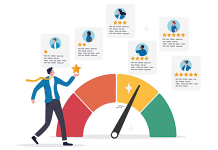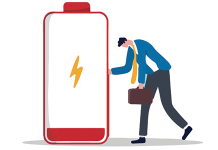SPONSORED CONTENT
Outbound sales is changing on macro and micro levels, shifting to a digital-first approach. Until recently, you still had initial outreach efforts where sales reps were making phone calls and walking up to a business address and shaking someone’s hand. Only a handful of pioneers were using sales automation and tech stacks. Today, it’s standard business practice. The differentiator for businesses now and going forward is really how these tools are being used.
Moving Away from Industrialized Digital Overload
Outbound sales has become more digital. With automation and multichannel tools, businesses can easily scale their outreach efforts. However, it’s important that businesses are truly scaling and not industrializing their approach.
For example, each business has its ideal customer profile (ICP) that it targets, comprised of company size, title, etc. Their teams automate lead collection on LinkedIn to build their network and their prospect list, and then they use their CRM to start contacting these leads through nurturing sequences.
This is a highly effective way to gather leads, but it can also contribute to overload if prospects are being entered into a sequence where they don’t belong.
Brands need to dig deeper into their ICP to find the criteria that signals this prospect is ready for outreach. Valuable indicators might include company activity such as mergers, expansions, job postings, webinar attendance and so forth
A fintech ICP, for example, might target companies that are hiring a financial analyst. This criteria suggests that this prospect is changing a relevant business process and potentially needs a new tool, signaling a strong opportunity for conversion.
As it stands now, our users already detect hyper-refined signals with automation workflows to gather intel, machine learning to enrich and segment prospects, and instant notifications so sales reps never miss a beat. The UX is just going to become a whole lot more seamless as we continue incorporating AI.
AI Allows Teams to be More Human
As machines get more powerful, AI will play an increasingly central role in analyzing data and signaling to businesses when a prospect has the most potential for conversion. It will no longer be human teams setting up automation triggers to find the ideal moment; AI will.
However, the more that cold outreach becomes automated, the more buyers will look for and value human interactions. Businesses should use AI to carry out routine and analytical processes so sales reps spend less time on top-of-the-funnel tasks and more time engaging accounts.
AI can act as an internal coach and review your sales processes to find red flags. Say your email campaigns aren’t performing well, then your team can switch to SMS for particular segments.
It can also help you evaluate the performance of your team and see where they’re having difficulty. With less time spent doing reporting and performance analysis, managers can dedicate time to training stronger reps.
As CRMs get smarter with integrated AI functionalities, humans will do fewer manual tasks and be free to engage their prospects and their teams. Buyers will get more qualitative sales information and valuable in-person interactions, and internal teams will get more face time with and training from their managers.
Next Steps
At Brevo, makers of a cloud-based software suite that helps businesses manage customer relationships, our trajectory is to provide flawless coordination between sales processes and empower teams to make an impact. We’re on a mission to develop a smart CRM that will put the human back in the driver’s seat. Visit www.brevo.com to learn more.




